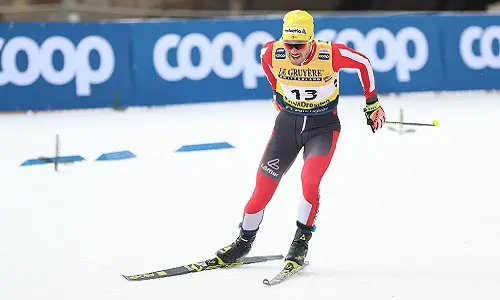A well-adjusted ski pole could make a huge difference in alleviating your skiing experience. You must adjust the pole straps properly to enjoy a poling motion so that your pole generates maximum power and takes the burden off your hands and arms.
When adjusting pole straps for cross country skiing, the hand should be placed below the flat strap, and the pole strap should be tightened for a good grip. Good pole strap adjustment helps maneuver and control, and the ski pole also provides a good workout to the hand muscles.
How to Get a Proper Grip?
If you have tried skiing even for once, you may realize that our walking and running motions help us ski better. But what about the ski pole that we hardly use in normal day-to-day life? Though we may not be much familiar with using a pole while advancing, a properly adjusted pole could be the difference between a great skiing trip and one that is below average.
Here is how you can adjust your ski poles to get the best poling motion:
- Step 1: Place your hand below the strap. Slide your hand in the poling strap by moving your hand from the bottom of the strap in an upward manner. The middle point of the pole strap should reach your wrist – just like a loose wristwatch. In this manner, when you hold the pole, the remaining part of the strap should come beneath your palm.
- Step 2: Make sure the strap is flat without any twists and turns. If there are any, unwind the strap until the strap is flat. This will ensure comfort as the twists will cause you a great deal of discomfort while you hold your pole for a long time. If you feel the twists are still there, you can release the pole strap from the ski pole, unwind the twists, and then reattach it, and follow Step 1 again.
- Step 3: Now it is time to adjust your pole strap. Hold your pole in such a manner that around a quarter to half an inch of the top (the knob) can be seen above your hand. Once you do that, tighten the pole strap to make the adjustments permanent (or until you re-adjust).
When your pole strap is well-fitted and tight, you can control your ski pole with a minimum amount of pressure. This results in a relaxed arm as less power is exerted by your thumb and forefinger.

If your poles have straps that emerge from the top, you can use a tape to wrap it around the top, shortening the strap. By doing this, you can adjust and improve your grip. A good way to check if you have properly adjusted the pole straps is to let go of the ski pole at the end of your poling motion. If the pole swings back naturally into your hand, you have done a good job.
Advantages
A ski pole is an important piece of equipment that aids your skiing style. It provides many benefits to the skier.
- It helps you maneuver in a better way:
Walking on the snow with skis on does not come in as natural as mere walking or running. Your ski pole helps you navigate through snowy terrain and maneuver in a flawless manner. When you are using a ski pole, the weight of your body can move over to the pole giving you a lighter and better experience. - A properly adjusted pole gives you more control:
Not only that, but you also end up strengthening the muscles in your upper body. If your pole is properly adjusted, your arms have to exert less pressure and hence are more relaxed. When you are holding a well-adjusted and well-strapped pole, you can grip it more comfortably. Also, when you release the pole at the end of your pole stroke, you do not have to lose control of the pole. - Using a pole can be a good workout without tiring down your hand muscles:
In the case of skate skiing, the skaters usually use extra long poles. This results in raising their arms in front of them every time they use the pole. The arms and torso work in coordination while providing a great workout to the upper body region. But this is for skating where the top part of your pole should lie in the middle of your chin and lips.For cross-country skiing, the placement of the pole is different as the top of your pole should be between your shoulder and armpit. This may exert less pressure on your arms and hands, relaxes them, while the upper arm and upper back muscles still enjoy a light workout.
A ski pole is any skier’s asset, but an unadjusted or badly adjusted pole can be a liability. Your ski pole can help you maneuver on different kinds of terrains as naturally as you would like. Not only that, but your body will also focus less on exerting pressure on your hands to do the pole’s job, and more on other aspects of skiing. As a result, you are more relaxed and ski better.
Conclusion
For beginners, adjusting your pole straps is often given less importance as compared to learning the actual sport. However, when your pole straps are properly adjusted, your pole performs the task it was supposed to – to aid you in skiing.
It may take a couple of minutes to try out the pole adjusting steps mentioned above, but once you get the hang of a well-adjusted pole with straps, it is a lesson that will help you in the long run. If you find it hard to hold or use your ski pole, it is time for you to reassess the pole and its strap adjustments.
Once you have the pole under control, there is no looking back, literally! So, let your well-adjusted ski pole do most of the work while you enjoy skiing.


